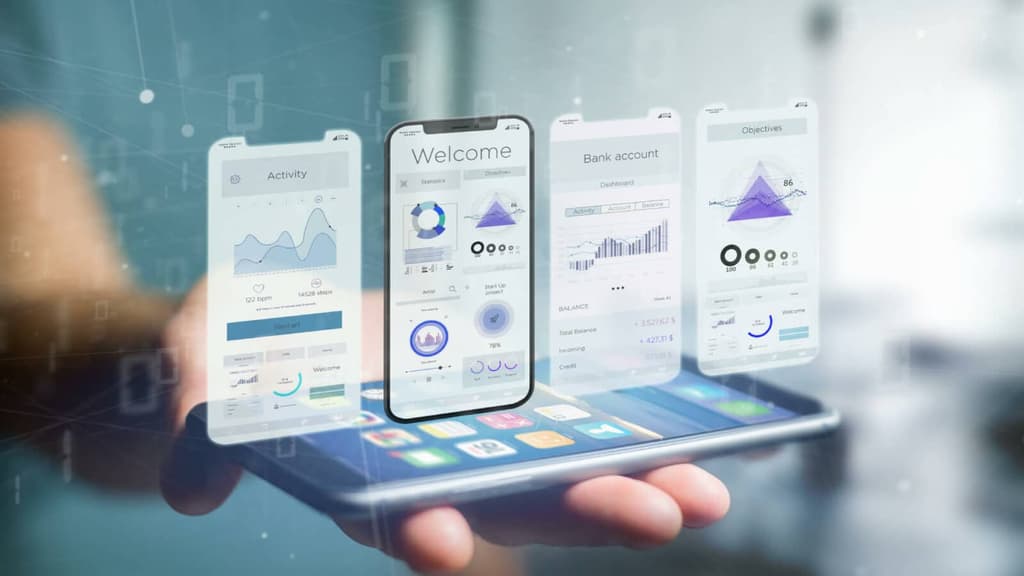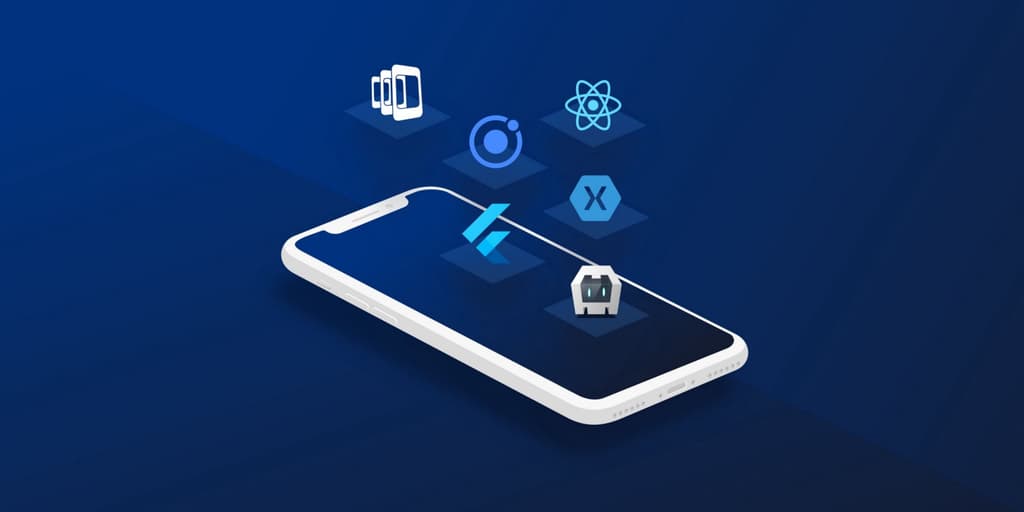In today’s digital age, mobile applications have become a cornerstone of technology, impacting personal and professional lives around the globe. This comprehensive guide provides an in-depth look at the process of developing cutting-edge mobile apps, tailored for both newcomers and experienced developers. By exploring a variety of technologies, platforms, and best practices, this article aims to enhance your skills and inspire innovative app development.
As we delve into the multifaceted world of mobile app creation, we’ll uncover the essentials of app development, from choosing the right platform to optimizing performance and ensuring security. This journey will equip you with the knowledge needed to design, build, and deploy applications that stand out in the competitive mobile market.
Understanding the Basics of Mobile App Development
Mobile app development starts with a solid understanding of the core principles that guide the design and functionality of applications. It involves selecting a development approach—native, web, or hybrid—and understanding the lifecycle of an app from conception to deployment. Developers must grasp how user needs dictate app features, ensuring that every step in the development process aligns with these requirements.
To begin, developers should familiarize themselves with programming languages such as Swift for iOS and Kotlin for Android. Understanding these languages and the respective SDKs (Software Development Kits) is crucial for building responsive and efficient applications. Furthermore, knowledge of basic UI/UX design principles helps in creating intuitive and engaging interfaces.
Choosing the Right Platform: Android vs iOS
Choosing between Android and iOS platforms is a critical decision for any app developer. Android, with its vast global market share, offers greater flexibility and customization options. Its open ecosystem allows developers to access more hardware options and cheaper development tools. Conversely, iOS boasts a more affluent user base and smoother user experience, often leading to higher in-app purchases and user retention rates.
While Android apps are developed using Kotlin or Java, iOS apps rely on Swift or Objective-C. Each platform has its own development environment—Android Studio and Xcode—which provide robust tools for building and testing applications. Developers must consider their target audience and the specific advantages of each platform to make an informed decision.
Exploring Cross-Platform Development Tools
For developers looking to target both Android and iOS without writing separate codebases, cross-platform development tools are a game-changer. Frameworks like React Native, Flutter, and Xamarin allow the creation of high-performance apps that feel native on any device. These tools significantly reduce development time and effort by enabling a single codebase to run on multiple platforms.
React Native, developed by Facebook, is popular for its live reloading feature and vast community support. Flutter, by Google, offers a rich set of pre-designed widgets and a reactive framework that helps in building beautiful, natively compiled applications. Xamarin, part of the Microsoft family, is preferred for sharing code across platforms while maintaining native performance and visual consistency.
Setting Up Your Development Environment
Setting up a productive development environment is essential for efficient mobile app development. This setup includes installing the necessary IDEs like Android Studio for Android apps and Xcode for iOS apps, along with configuring simulators and real devices for testing. Version control systems like Git are crucial for tracking changes and collaborating with other developers.
Beyond the basic setup, developers should also configure their environment with debugging and profiling tools to identify and solve performance bottlenecks. Continuous integration and deployment (CI/CD) pipelines can automate testing and deployment, enhancing the overall productivity and quality of the development process.
Designing User Interfaces for Enhanced User Experience
Designing user interfaces (UI) is a critical component of mobile app development, directly impacting the user experience (UX). Effective UI design involves creating intuitive, accessible, and aesthetically pleasing interfaces. This process starts with wireframing and prototyping to visualize the structure and flow of the app.
Designers use tools like Sketch, Adobe XD, and Figma to create and iterate on app designs. Attention to detail in elements such as typography, color schemes, and interaction design can significantly enhance the usability and appeal of the app. Moreover, adhering to platform-specific design guidelines—Material Design for Android and Human Interface Guidelines for iOS—ensures consistency and familiarity for users.

Utilizing Frameworks and Libraries for Rapid Development
Frameworks and libraries play a pivotal role in speeding up the development process by providing pre-written code and modules. For Android, libraries like Retrofit for networking and Glide for image loading are indispensable. iOS developers rely on libraries such as Alamofire for HTTP networking and Kingfisher for efficient image caching.
Using these tools allows developers to focus more on the unique aspects of their app rather than common functionalities. Additionally, frameworks like Angular for Ionic apps or Vue.js for NativeScript apps provide a structured environment for building robust and maintainable codebases.
Integrating Backend Services and APIs
Integrating backend services and APIs is crucial for enabling advanced functionalities like data synchronization, user authentication, and real-time communication. Developers can opt for BaaS (Backend as a Service) providers like Firebase or Parse, which offer easy-to-use SDKs for common backend tasks.
For custom backend solutions, RESTful APIs are commonly used to communicate with server-side applications. Understanding JSON and XML for data exchange and mastering HTTP request methods are essential skills for developers. Security measures, such as OAuth for authorization, should also be implemented to protect data integrity and privacy.
Ensuring App Security and Privacy
Security is paramount in mobile app development due to the increasing threats and vulnerabilities. Developers must adopt best practices such as encryption for data at rest and in transit, securing APIs, and implementing secure authentication mechanisms like biometrics or two-factor authentication.
Privacy regulations, such as GDPR and CCPA, require apps to handle user data responsibly. Developers should ensure that privacy policies are transparent and seek user consent for data collection. Regular security audits and updates can help in identifying and mitigating potential security issues before they become critical.
Testing Your App: Unit Tests, UI Tests, and Beta Testing
Thorough testing is essential to ensure the quality and reliability of a mobile app. Unit tests evaluate individual components for functionality and logic errors, while UI tests automate the testing of user interactions within the app. Tools like JUnit and Espresso for Android, and XCTest for iOS, facilitate these testing approaches.
Beta testing, involving real users testing the app in real-world scenarios, provides invaluable insights into user behavior and app performance. Services like TestFlight for iOS and Google Play Beta Testing for Android enable developers to distribute pre-release versions of their apps to a select group of users for feedback.
Optimizing Performance for Smooth Operation
Performance optimization is crucial for a seamless user experience. Developers should focus on minimizing app load times, optimizing battery usage, and ensuring smooth animations and transitions. Profiling tools like Android Profiler and Xcode Instruments help in identifying performance bottlenecks.
Memory management is another critical aspect, especially for apps running on devices with limited resources. Efficient use of resources, avoiding memory leaks, and reducing app size through techniques like image optimization and code minification contribute to better overall performance.

Understanding App Store Guidelines and Requirements
Navigating app store guidelines and requirements is vital for the successful submission and distribution of a mobile app. The Apple App Store and Google Play Store have specific guidelines covering everything from content policies to technical requirements. Adhering to these guidelines prevents rejections and ensures a smoother review process.
Developers should be familiar with the review guidelines and use them as a checklist before submission. This includes testing for common issues like crashes, fixing bugs, and ensuring the app meets all privacy and security standards set by the platforms.
Marketing Your App to Reach a Wider Audience
Effective marketing is essential to ensure your app reaches its target audience and achieves success. This involves a mix of strategies including app store optimization (ASO), social media marketing, influencer partnerships, and press releases. A compelling app description, engaging screenshots, and videos can significantly increase visibility and downloads.
Email campaigns and in-app referrals can also drive growth and retention. Analyzing user feedback and app performance metrics guides the refinement of marketing strategies and app updates, ensuring continuous improvement and user engagement.
Marketing Your App to Reach a Wider Audience
Successfully launching your mobile app is just the beginning; the next crucial step is to market it effectively to ensure it reaches a wider audience. Developing a comprehensive marketing strategy is essential, involving both digital marketing techniques and traditional methods. Initiatives like search engine optimization (SEO) to enhance your app’s visibility in app store searches, and social media marketing to engage with potential users, are fundamental. Content marketing, through blogs and videos that highlight the app’s features, can also significantly increase user interest and downloads. Pay-per-click (PPC) campaigns and influencer partnerships extend your app’s reach further, potentially attracting a global audience.
Email marketing campaigns can be particularly effective for maintaining contact with users who have shown interest in your app, providing them with updates and special offers to encourage engagement. Analytics play a key role in understanding user behavior and refining marketing strategies over time. By continuously analyzing the performance of your marketing efforts, you can make informed decisions that enhance your app’s profile and user base. Remember, the goal is to create a buzz that makes your app a well-known name, driving continuous growth in user numbers and interaction.
Maintaining and Updating Your App Post-Launch
After your app has been launched, the work isn’t over. Ongoing maintenance and regular updates are critical to keeping your app relevant and functioning optimally. Users expect frequent updates that not only fix bugs but also introduce new features and improvements that enhance their experience. Effective maintenance includes monitoring app performance metrics to identify and resolve any issues quickly. Feedback from users is invaluable, as it helps developers understand what features are most desired and what aspects of the app may be causing problems.
Scheduling regular updates is a strategy that keeps your app in compliance with the latest operating system versions and third-party services. These updates can include new functionalities, performance enhancements, and adjustments based on user feedback and usage data. It’s also essential to communicate these updates effectively to your users to encourage them to download the latest version of your app. A transparent approach about what each update includes can foster trust and loyalty among your user base, ensuring they remain engaged and satisfied with your application.
Exploring Advanced Features: AI, AR, and More
To distinguish your mobile app from the competition, integrating advanced features like Artificial Intelligence (AI), Augmented Reality (AR), and other cutting-edge technologies can be a game-changer. AI can be used to personalize user experiences, making your app smarter and more intuitive. For instance, AI-powered chatbots can provide instant support to users, while machine learning algorithms can analyze user behavior to optimize app performance and usability. Augmented Reality offers users a more immersive experience, transforming how they interact with the app by overlaying virtual elements on the real world.
Beyond AI and AR, technologies like Virtual Reality (VR), Internet of Things (IoT), and Blockchain are also becoming increasingly popular in mobile app development. VR can create fully immersive user environments, ideal for gaming and educational apps. IoT integration allows your app to communicate with other smart devices, enhancing user engagement and functionality. Meanwhile, Blockchain can offer heightened security and transparency for apps that require reliable data handling. By staying ahead of these technological trends, your app can offer unique features that captivate and retain users.